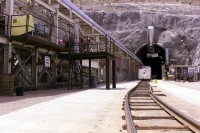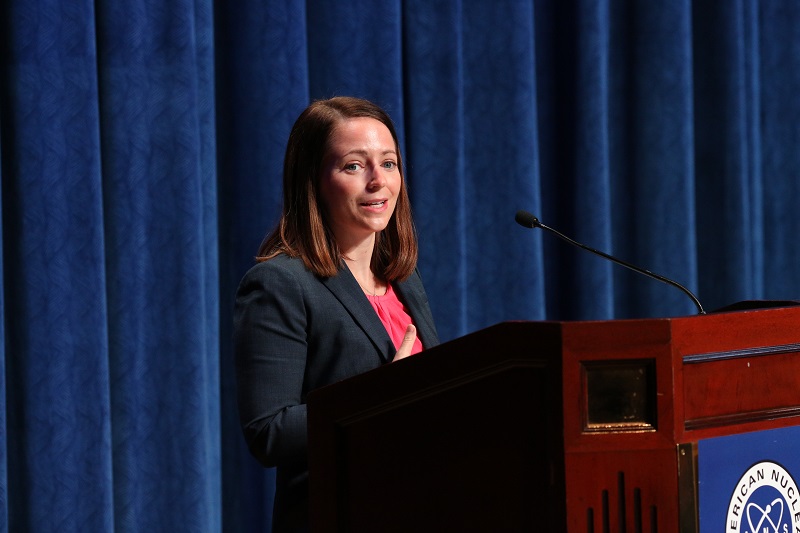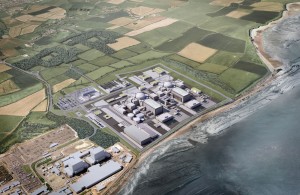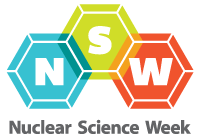A message from NV5, Inc.
Seconds Matter: Rethinking Nuclear Facility Security for the Modern Threat Landscape

A message from NV5, Inc.
Seconds Matter: Rethinking Nuclear Facility Security for the Modern Threat Landscape
On November 28, 2014, "Block 3" (or the third unit) at the massive Zaporizhia Nuclear Generating Station in Ukraine experienced a fault in electrical transmission equipment outside the nuclear portion of the plant itself. This fault essentially caused the 1000-MW rated nuclear plant to have nowhere to send that large amount of power it was generating, per its design. The nuclear plant tripped off its turbine generator (opening its output breakers) and scrammed the reactor. In the world of power generating equipment anywhere, no matter the power source, this type of event is fairly common. This scenario is possible when severe storms play havoc with the grid during intense lightning.
On November 5, the day before a scheduled quarterly conference call with investors and analysts, Babcock & Wilcox (NYSE:BWC) announced that it was splitting into two separate publicly traded companies.
 It's time for the 237th Nuclear Energy Blog Carnival, and this time it's right here at the ANS Nuclear Cafe. Because of the Thanksgiving holiday week, the contributions are slightly reduced in number compared with the usual, but what there is packs a punch. Let's get to it!
It's time for the 237th Nuclear Energy Blog Carnival, and this time it's right here at the ANS Nuclear Cafe. Because of the Thanksgiving holiday week, the contributions are slightly reduced in number compared with the usual, but what there is packs a punch. Let's get to it!
 Last month, the Nuclear Regulatory Commission finally released Volume 3 of the Safety Evaluation Report (SER) for the Yucca Mountain nuclear waste repository. This volume covers the post-closure evaluation of the repository, and includes all of the analyses that show that the repository will meet the stringent waste material containment requirements over the evaluated one million year period. Other volumes, which cover other areas of repository design (e.g., surface facilities, etc..), have yet to be released.
Last month, the Nuclear Regulatory Commission finally released Volume 3 of the Safety Evaluation Report (SER) for the Yucca Mountain nuclear waste repository. This volume covers the post-closure evaluation of the repository, and includes all of the analyses that show that the repository will meet the stringent waste material containment requirements over the evaluated one million year period. Other volumes, which cover other areas of repository design (e.g., surface facilities, etc..), have yet to be released.
by Nicholas Thompson
I have generally been quite a skeptic about thorium as a source of nuclear fuel. Although I know that thorium was tried in the fuel at two very early commercial power reactors in the United States (Elk River, and Indian Point-1), the idea did not take off. The proposals to use thorium in fluid fuel reactors were far less successful, with none moving beyond the prototype stage. Even given the low success rate, it still remains that the use of thorium is promising.
This column was initially published in the October 16, 2014, issue of Fuel Cycle Week and is republished here with permission.

Jessica Lovering speaks at ANS 2014 Winter Meeting
Breakout sessions with three acknowledged experts in the areas of nuclear policy, nuclear plant operations, and nuclear regulation were the highlight of an innovative and engaging Opening Plenary at this year's ANS Winter Meeting
American Nuclear Society President Michaele Brady Raap has released a letter calling ANS members to action-and by "action," she means making comments to the Environmental Protection Agency on its Clean Power Rule. According to Brady Raap, "the rule as it is currently structured would almost entirely discount the clean energy contributions of our current nuclear energy facilities and effectively penalize states that have new plants under construction."
 The 233rd Nuclear Energy Blog Carnival has been posted at Next Big Future.
The 233rd Nuclear Energy Blog Carnival has been posted at Next Big Future.

Hinkley Point C - conceptual view. ©EDF
by Jim Hopf
 The 232nd Nuclear Energy Blog Carnival has been posted at The Hiroshima Syndrome.
The 232nd Nuclear Energy Blog Carnival has been posted at The Hiroshima Syndrome.
 The fifth and final day of Nuclear Science Week is all about Nuclear Medicine. Have you ever experienced a procedure at a hospital that employed radiation? Did you know that there are actually many different ways that nuclear technology is employed in medicine-and not just at your local hospitals?
The fifth and final day of Nuclear Science Week is all about Nuclear Medicine. Have you ever experienced a procedure at a hospital that employed radiation? Did you know that there are actually many different ways that nuclear technology is employed in medicine-and not just at your local hospitals?
 Day 4 of the annual National Nuclear Science week is all about Nuclear Safety.
Day 4 of the annual National Nuclear Science week is all about Nuclear Safety.
 The third day of National Nuclear Science Week is focused upon the production of energy by nuclear means-and that means energy that can do work for man. Electric power, steam for heating businesses and homes, and mechanical power for propelling ships are perhaps the best known examples of man's use of nuclear energy.
The third day of National Nuclear Science Week is focused upon the production of energy by nuclear means-and that means energy that can do work for man. Electric power, steam for heating businesses and homes, and mechanical power for propelling ships are perhaps the best known examples of man's use of nuclear energy.
 The second day of National Nuclear Science Week promotes the knowledge of careers in nuclear-related fields.
The second day of National Nuclear Science Week promotes the knowledge of careers in nuclear-related fields.
 Monday, October 20, marks the first official day of National Nuclear Science Week-a week long, annual coordinated educational event that promotes nuclear science and technology.
Monday, October 20, marks the first official day of National Nuclear Science Week-a week long, annual coordinated educational event that promotes nuclear science and technology.